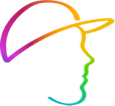This post is up to date for Xcode 15 and newer. It supersedes a version of this post that you can find here On iOS 15, Apple granted developers the ability to present partially visible bottom sheets using a component called UISheetPresentationController. Originally, we had to resort to using a UIHostingController to bring this component […]
Read post
Subscribe to my newsletter and never miss a post
Recent articles
Jump to a random postWorking with dates isn’t easy. And showing them to your users in the correct locale hasn’t always been easy either. With iOS 15, Apple introduced a new way to convert Date objects from and to String. This new way comes in the form of the new Formatter api that replaces DateFormatter. As any seasoned iOS […]
Read postClosures are a powerful programming concept that enable many different programming patterns. However, for lots of beginning programmers, closures can be tricky to use and understand. This is especially true when closures are used in an asynchronous context. For example, when they’re used as completion handlers or if they’re passed around in an app so […]
Read postDisclaimer: This post is not sponsored by Proxyman, nor am I affiliated with Proxyman in any way. I pay for my license myself, and this post is simply written as a guide to learning more about a tool that I find very important in the iOS Developer toolbox. Networking is an essential part of modern […]
Read postWhen you’re writing a conversion layer to transform your callback based code into code that supports async/await in Swift, you’ll typically find yourself using continuations. A continuation is a closure that you can call with the result of your asynchronous work. You have the option to pass it the output of your work, an object […]
Read postSwift’s async/await feature significantly enhances the readability of asynchronous code for iOS 13 and later versions. For new projects, it enables us to craft more expressive and easily understandable asynchronous code, which closely resembles synchronous code. However, adopting async/await may require substantial modifications in existing codebases, especially if their asynchronous API relies heavily on completion […]
Read postIn my previous post you learned about some different use cases where you might have to choose between an async sequence and Combine while also clearly seeing that async sequence are almost always better looking in the examples I’ve used, it’s time to take a more realistic look at how you might be using each […]
Read postSwift 5.5 introduces async/await and a whole new concurrency model that includes a new protocol: AsyncSequence. This protocol allows developers to asynchronously iterate over values coming from a sequence by awaiting them. This means that the sequence can generate or obtain its values asynchronously over time, and provide these values to a for-loop as they […]
Read postWith Swift 5.6, Apple added a new keyword to the Swift language: any. As you’ll see in this post, usage of the any keyword looks very similar to how you use the some keyword. They’re both used in front of protocol names, and they both tell us something about how that protocol is used. Once […]
Read postIt’s been a while since I published my post that helps you wrap your head around Swift’s property wrappers. Since then, I’ve done more and more SwiftUI related work and one challenge that I recently had to dig into was passing dependencies from SwiftUI’s environment into a custom property wrapper. While figuring this out I […]
Read postExpand your learning with my books

Learn everything you need to know about Core Data and how you can use it in your projects with Practical Core Data. It contains:
- Twelve chapters worth of content.
- Sample projects for both SwiftUI and UIKit.
- Free updates for future iOS versions.
The book is available as a digital download for just $39.99!
Learn more